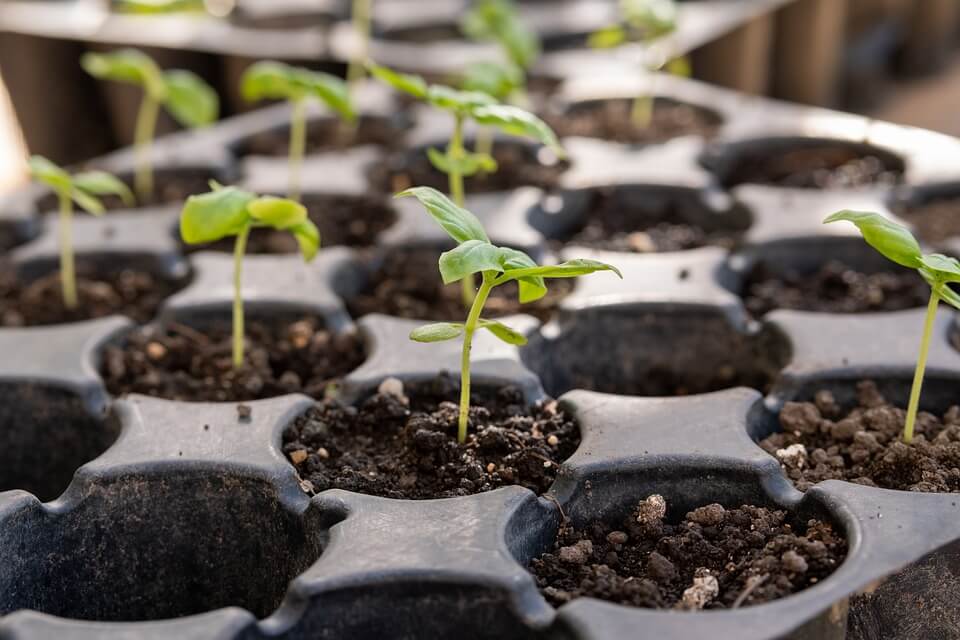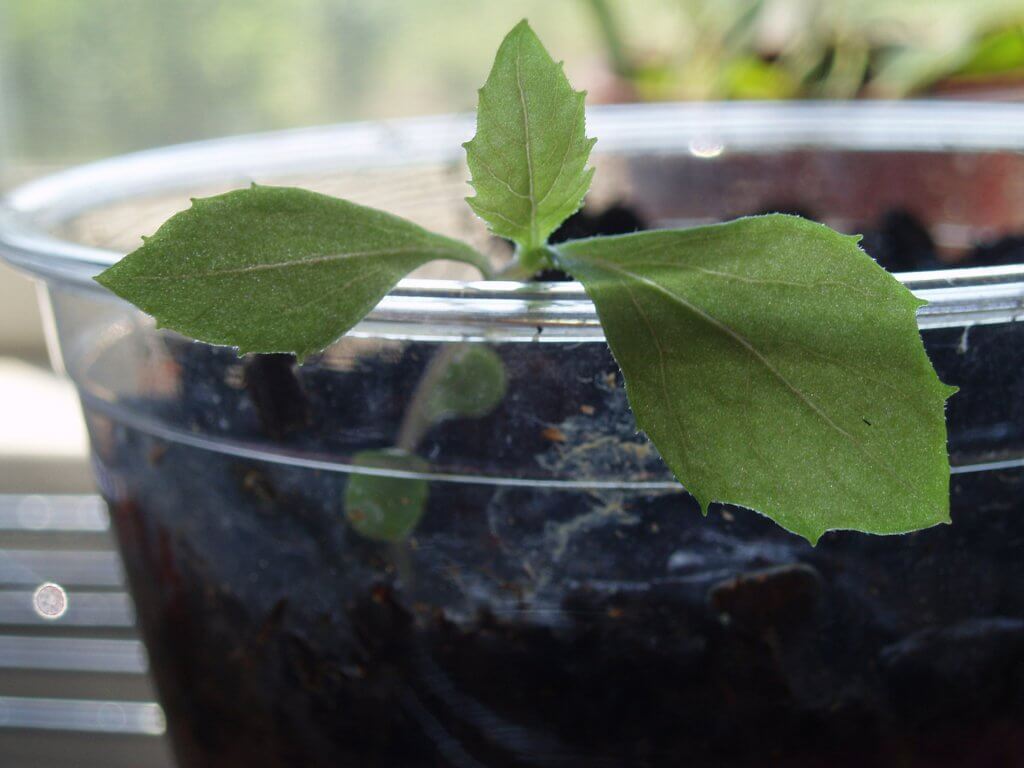Our April Garden Starting Schedule
This is part two of our three part series where we detail our general seeding timeline and efforts around starting a large, subarctic garden from seed. You can skip back to March or ahead to May, if you like!
This guide generally follows our published planting schedule for USDA zones 2a through 4b. We have also established date corrections for other northern zones.
Similar to what we did in March, we will do four separate plantings during the month of April.
Again, we prefer to plant on the weekends as this is when we have the most time available. A few days on either side of the schedule will not make a huge difference, so plant things when it is convenient for you.

This schedule uses our “aggressive” methods and techniques. You may need (or want) to use different dates, based on the recommended ranges, for your growing space.
Our “official” seed schedule provides a range of potential seeding dates. We usually use the earlier of those dates. We allocate the space needed for our garden starts, which allows us to accommodate the larger garden starts.
If you are highly restricted for space, we recommend using the later of the planting dates. Gardening is simply a personalized process and there’s no getting around learning what’s right for you.
As we also mentioned in our March schedule, we update our official seed schedule more frequently than this page.
Seeds You Should Plant Around April 6th
- Brussels sprouts
- Collard greens
- Garden Huckleberry
- Peppers (If you intend to plant in a greenhouse, you can plant 1-2 weeks earlier.)
- Tomato (Wait 1-2 weeks if you have a small grow room. If you intend to plant in a greenhouse, you can plant 1-2 weeks earlier.)
- Tomatilla (Wait 1-2 weeks if you have a small grow room. If you intend to plant in a greenhouse, you can plant 1-2 weeks earlier.)
- Ground Cherry (Wait 1-2 weeks if you have a small grow room. If you intend to plant in a greenhouse, you can plant 1-2 weeks earlier.)
- Raddichio
- Sage
- Asperula
- Bells of Ireland
- Cosmos
- Daisy, English
- Dianthus
- Feverfew
- Impatiens
- Kochia
- Lychnis
- Malope
- Malva
- Nicotiana
- Petunia
- Snapdragon
- Statice
- Straw Flowers
- Sweet William
- Verbena
- Salpiglossis
- Mallow
Seeds You Should Plant Around April 13th
- Broccoli
- Cilantro
- Parsley
- Tarragon
- Thyme
- Any other herbs that weren’t previously specified, except for dill & basil
- Aster
- Calendula
- Dahlia Tubers
- Daisy, African
- Gladiola Corms
- Godetia
- Layia
- Phlox
- Schizanthus (Butterfly Flower)
Seeds You Should Plant Around April 20th
- Cauliflower
- Chamomile
- Kale
- Kohlrabi
- Lettuce, Head
- Spinach
- Strawberry Spinach
- Arugula
- Ageratum (Floss Flower)
- Alaska Cut Mix
- Baby’s Breath
- Candy Tuft
- Clarkia
- Larkspur
- Lavatera
- Linaria
- Marigold
- Morning Glory
- Oriental Poppy
- Poppy
- Stocks
- Sweet Pea
- Ursinia
- Yarrow
Seeds You Should Plant Around April 27th
- Basil
- Bok Choy
- Cabbage
- Dill
- Lettuce, Leaf
- Squash, Summer
- Squash, Winter
- Swiss Chard
- Mustard Greens
- Amarath
- Celosia
- Columbine
- Nasturtium
- Bachelor Buttons
Our April Planting Commentary
Should you want to grow your own vegetable starts in our northern region, there is little doubt that April is one of the busiest months of the year!

April is the time when we put most of our seeds under soil and things continue to ramp up with the gardening season.
If you haven’t started planting yet, April is definitely the month you can’t miss. This month is the point of no return for vegetables you didn’t plant in March. If you aren’t yet ready with your indoor garden, chances are good you will need to buy some of your garden starts for your garden.
The Scope Of April’s Gardening Activities
As you saw above, our seeding schedule calls for a lot of seeding activities over April. Other than our very early stuff and our super fast growers, April is by far the busiest month for planting seeds in our indoor garden.
April is the time when we usually have 3-4 seedling trays going and are super busy preparing our veggies for their next stage in life.

We are also maintaining the seedlings that we seeded in March. Our seeds have sprouted and now we’re well into the process of transplanting our seedlings to their final home before they go into the garden.
This management process includes culling multiple seeds that may have sprouted and ensuring “one plant per growth site” principles. This is one of our most basic gardening tips that will get you great garden starts!
You can thin your plants out multiple ways. We use a set of fine cutters to snip off our plants. You also have the option of carefully transplanting extra plants to a new, dedicated growth site. We just snip them because it’s easier, faster and seeds are cheap.
April Begins The (Seemingly) Endless Process Of Transplanting!
Many of the seeds you planted in March will be ready for transplant into larger containers. This process is essential to maintain continual growth of your plants and to ensure you have proper garden starts for planting in your garden.
Late April often offers great weather conditions for hardening off our plants outdoors. We will often start to try to harden off some of our more mature (and frost tolerant) seedlings on those nicer days.
When we really want to push the limits, we use our depth of knowledge in plant tolerance to start the process of phasing some of our plants outside entirely.
Careful plant management often allows us to get our plants outside a full five to six weeks before last frost!
The Real Gardening Challenge Happens In April!
As you probably gathered from the above lists, that’s a LOT of things to plant. You’re probably not growing every single thing on the list, but perhaps many of them.
We talk about indoor garden management concepts in much further depth, but there is some method to the madness of this schedule. You might not even notice it if we didn’t point it out.
If you look carefully at our brassicas (cabbage, broccoli, kale, collards, etc) you will notice that we spread them out across multiple planting dates. Brassicas all have pretty much identical planting times and for the most part, can be treated very similarly.
The reason for these differences is that we grow a lot of these types of plants. If we planted all of them in one weekend, it would take up a tremendous amount of space in our seeding trays. Come time to transplant? That’s a lot of work all at once!
Spreading out your plantings of things you grow a lot of will help you better manage your indoor growing space. It will help you manage your time better and also help you from getting overwhelmed.
April is hard enough to get through, with so much going on. Adjusting little details like this are some of those finer nuances that experienced gardeners use to help manage the seed planting process!
There’s More? What You Can Expect For May
We’re not quite done with our garden yet. There’s still a bit more coming in May.
If you want to get a sneak peak of what you should be planting in May, we’ve detailed this out as well.
Fortunately, the most difficult and time intensive processes are in April. May is always welcome as it means we can actually start playing in our gardens!
That’s All We Wrote!

Having a good time? We have an ever growing list of insightful and helpful subarctic & cold climate gardening articles, waiting out there for you!
- Cold Climate Gardening Basics 👉
- Growing Your Garden From Seed Indoors 👉
- Advanced Cold Climate Gardening Techniques 👉
- Plant Specific Cold Climate Growing Guides 👉
- Subarctic Perennial Food Forests & Foraging 👉
- Indoor Garden Lighting & Grow Rooms 👉
- Greenhouses & Temperature Control 👉
- Harvesting & Food Preservation 👉
- Solving Cold Climate Garden Problems 👉
- 1 Minute Reads On Tons Of Garden Topics 👉
FrostyGarden.com is 100% ad-free and we do not use affiliate links! This resource is voluntarily supported by our readers. (Like YOU!) If we provided you value, would you consider supporting us?

Thanks. I have a question about bush and pole beans. I live in N. Michigan, region 5b and follow your planting list for me. I start everything in a newly built greenhouse. I don’t see beans on your list. I assume direct sow. Just curious. I totally appreciate your website. Do you have youtube videos. Do you have shop so I can support you with a sweatshirt purchase or something?
Thanks
Jeff
With all beans and peas, these are direct sowed. We typically wait until around last frost for both peas and beans. On our schedule, you’ll see these in May.
Peas are more frost tolerant than beans are, so if you want to get a head start, only do so with the peas. (Up to about a week or two prior to last frost, they’ll “pop” when conditions are right.) Beans are frost sensitive, so if there are any threats of late frost, it’s a good idea to wait until it passes.
Hope that helps and we’re glad you’re finding our site to be a helpful resource! We don’t have any merch currently, but we’ve thought about it as we think it would be fun! Stay tuned!
Oh, and I did notice that our May planting schedule didn’t specifically have beans on them! Thanks for catching that oversight, it’s super valuable to future readers!
Thanks for the schedule and adding beans. I appreciate the info and your time to offer replies. I would buy a sweatshirt or something to support you in the future. We work for an apple orchard Aug – Nov called Frosty Apple. Owners last name is Frosty.
I live in zone 10 semitropical south Florida. I have done backyard gardening & warm & hot weather veggies are at home in this zone & climate, but cool & cold weather veggies are ‘marginal’ to say the least. Everything is planted in September onwards. Cool/cold weather veggies do not grow that big because of little cool & cold weather. Like cabbages the size of a softball or grapefruit if you’re lucky. Broccli slender & a small head but a lot of ‘rapinni’ the edible leaves & shoots growing like ‘pencils’. Califlower produce small heads in cooler than normal years. Chinese greeens grow medium small like napa cabbage. Lettuce has a funny off taste but salad dressing usually covers the taste. Head lettuce never heads & onions grow only small. Collard greens grow really good & even grows in the summer. BTW this is in our winter. Snow & English peas produce small & mini pods By April cool/cold veggies start bolting & in May warm weather veggies slow down & by June they don’t die but go into a ‘green dormacy’ because of the tropical heat & humidity. They don’t even produce any flowers.I have seen this with eggplant, peppers & tomatoes. Day temps like 92 F & night temps like 82 F with say 91% humidity & frequent heavy rain. We average 55-65 inches of rain a year & as high as 90-100 plus inches a year. 2000 was one of the driest years with only 39 inches & in most temperate areas 40 inches of rain is a good amount. The soil is sandy & drains good. We may go 10-12 years with no frost & it is usually light & patchy. Hot weather veggies like okra, sweet potatoes, tropical leafy greens, yucca/casava, cherry tomatoes & hot peppers will grow in the summer here. BTW this is the way these veggies grow in Tropical warm areas from my research.
I’ve always had an interest in growing in a tropical climate, maybe someday! The tropical planting schedule is an interesting thing to plan and think about. It’s unfortunate your cool weather crops don’t thrive when grown over the winter, it must still be too warm. Good to hear you can at least get some things to work, somewhat! I feel exactly the same about things like tomatoes and peppers, it’s a real struggle here! Thanks for sharing!